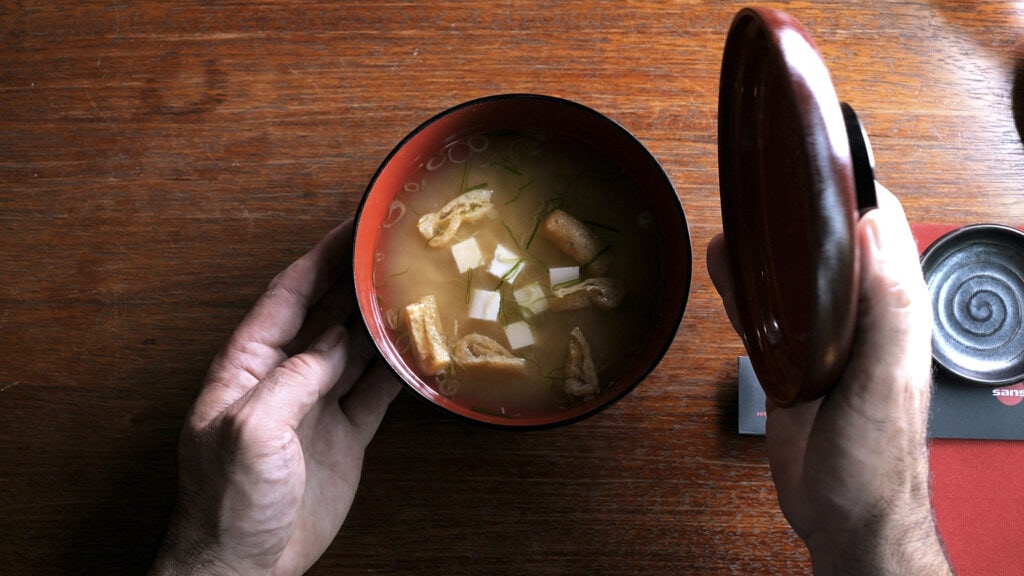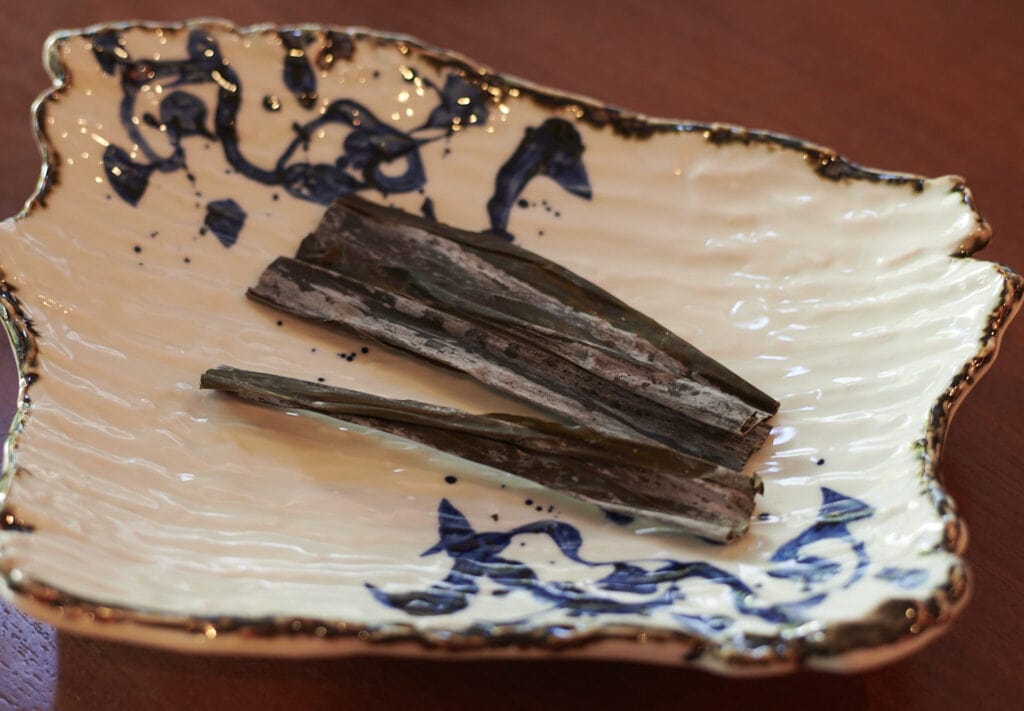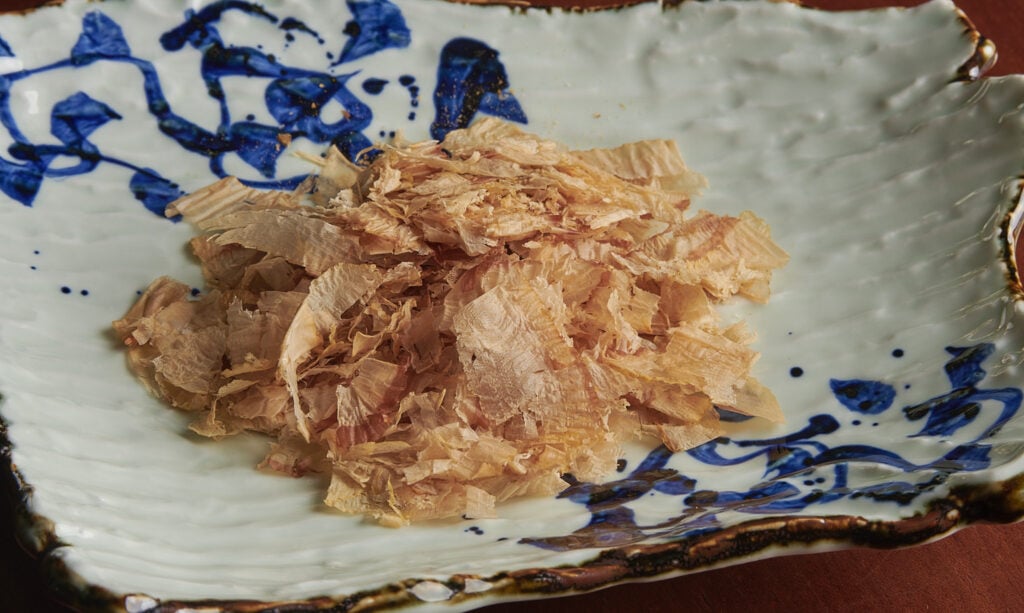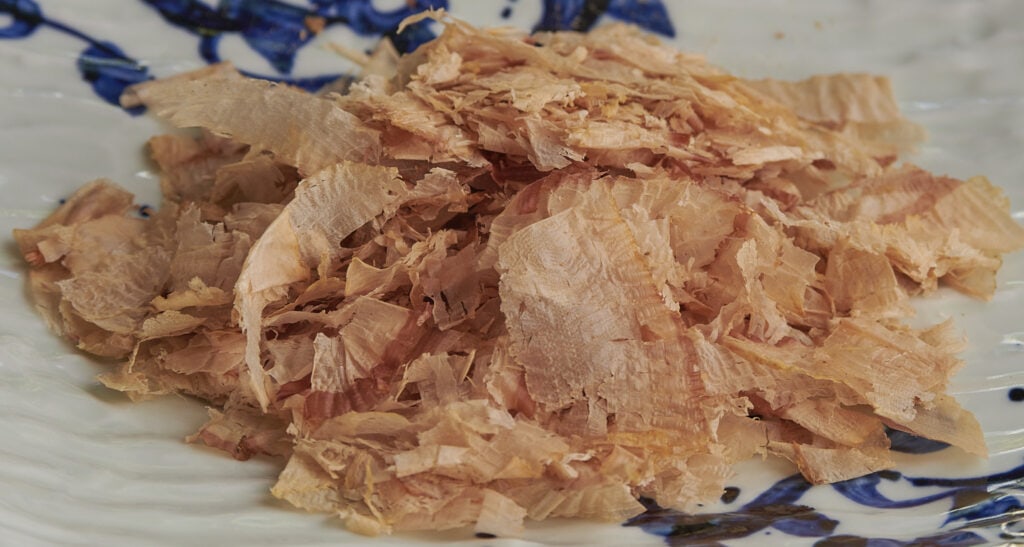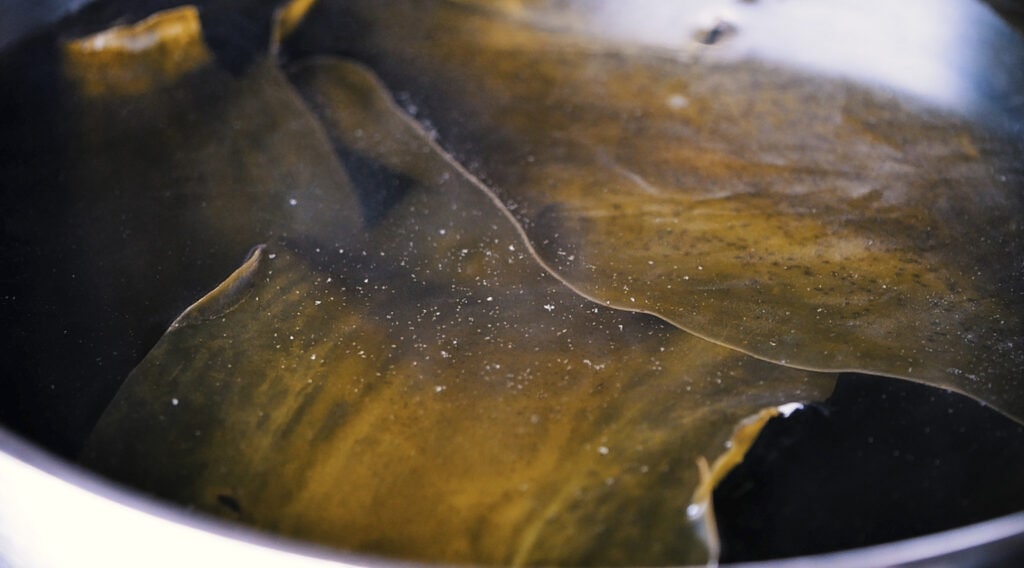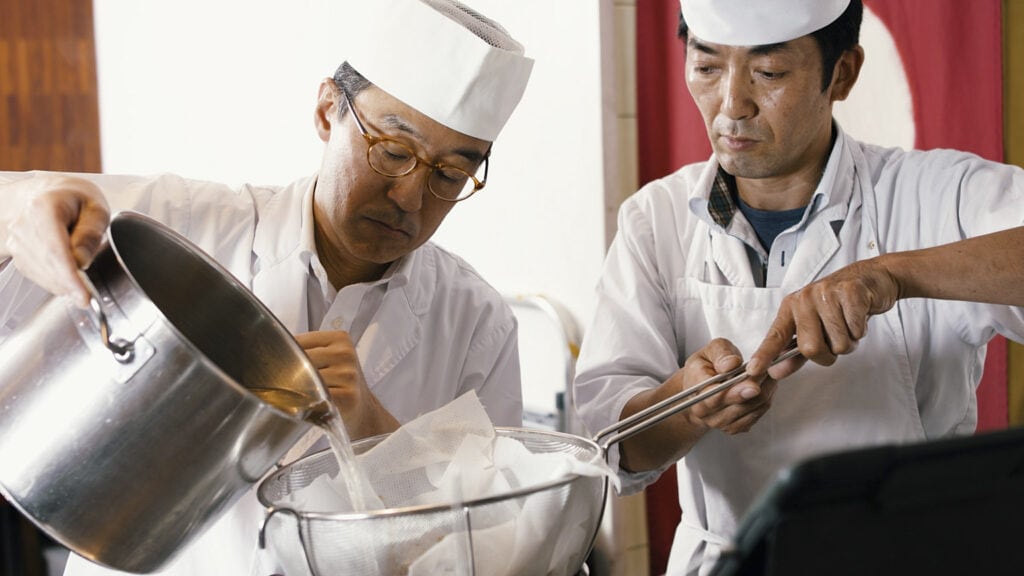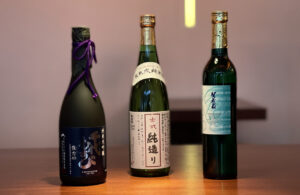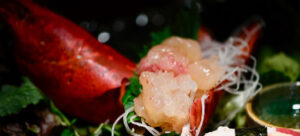Watch the video on the topic now!
Japanese miso soup, also known as "misoshiru" and always found on the menu of sushi restaurants, is made by combining miso with a unique Japanese soup stock called dashi.
The production of dashi - and thus of a true miso soup - is closely linked to the geography of the Japanese island chain and the seas surrounding it.
Dashi is a key flavor carrier and a commonly used base of the Japanese cuisine - and one of the secrets why the Japanese cooks is so light, healthy and yet tasty.
A bowl of soup is part of a Japanese meal
An important part of the traditional Japanese meal is the concept of "Ichijyū i Issai" (一汁一菜, a bowl of soup and a side dish).
This soup is then usually a misoshiru - it is an indispensable part of Japanese cuisine and almost a meal in its own right.
The miso that gives miso soup its name is now known as a food and spice in the West as well.
It is made by fermenting soybeans, rice, wheat and other grains with salt and Kōji.
By changing the Kōji variety and fermentation time, miso can be made in different colors, such as red and white, and a wide variety of flavors can be enjoyed. Typically Japanese, the color and flavor are slightly different depending on the region; each region in Japan has its own expression of miso.
The great variety of miso
Miso is produced throughout Japan, from Hokkaido in the north to Okinawa in the south, and each region has its own unique characteristics for miso. While technically each miso producer can produce a wide variety of miso. However, the rugged landscape of Japan, the enthusiasm of the Japanese for food and, above all, for the special, means that usually each producer has its own special Taste, its own flavor on the basis regional characteristics and preferences developed.
It is said that there are more than 800 miso breweries in Japan. There are miso products that reflect the history and food culture of each region. Most of them were established in the Edo period, and many local miso products bear the name of the clan or principality at that time.
A Miso Journey Through the Country...
The different types of miso in Japan also depend on the climate and geography of the country, which stretches from north to south.
In Hokkaido, red semi-dry miso is mainly produced, and in the Sendai region of Miyagi Prefecture, red dry miso, which has been handed down for about 400 years, called "Sendai Miso" is famous,
The colder the region, the more dry miso is produced, while relatively warmer regions west of Tokyo produce sweeter miso. Rice is the grain most commonly used throughout Japan to make miso, but beans are also used in the Chubu region, and barley is used in some areas of Kyushu and Shikoku.
Traveling through Japan and tasting the unique miso soups and culinary specialties of each region is a special experience that can only be had in Japan itself.
...and through time
Miso, believed to have originated in the Heian period (794-1185), was originally eaten as a side dish with rice, as the soybean and barley grains remained in their original form.
Later, under the influence of Chinese monks who came to Japan from China during the Kamakura period (1185-1333), the suribachi (earthenware mortar) was used as a cooking utensil. And when the fermented miso grains were ground, they dissolved easily in water so that they could serve as miso soup.
Dashi - the special base of Japanese cuisine
Another essential ingredient for miso soup is dashi, which is made by boiling kombu (seaweed), katsuobushi (dried bonito flakes), and so on. By the way, the best konbu comes from Hokkaido, the large northern island of Japan, where it is harvested by hand and ripened under fresh skies.
Other dried ingredients such as dried shiitake mushrooms can also be used - for example, Japanese monastic cuisine "Shoijin-Ryori" in Buddhist temples uses dried shiitake mushrooms instead of katsuobushi.
You could also make a dashi fund with just konbu - but typically in Japan, the dashi that is based on konbu and Katsuobushi based, especially since in Japan there is not such a sharp distinction between vegetarian cuisine.
Only seemingly simple: how to make bonito flakes
Here shows the apparent simplicity, but actually great depth and the very special place and history of Japanese cuisine. Because the production of these bonito flakes is also a separate process with a tradition that goes back a long way. The mostly around southern Japan, in the warm sea water caught bonito are dried in an elaborate process, slowly smoked, fermented with a special fungus - and later, when the so treated fish has been dried hard in the sun, processed with special planes (Katsuobushi kezuriki) into fine flakes.
Umami: the discovery of a special flavor
"Umami", the source of deliciousness of dashi, is one of the five basic flavors (along with sweet, sour, bitter and salty), is rich in amino acids and nucleic acids, and has high nutritional value.
Misoshiro - Japanese standard
Misoshiru is a soup that is a symbol of Japanese cuisine, with the flavors of miso and dashi broth, the typical essence of Japan. In addition to the variety of miso, the ingredients for misoshiru can be combined with a variety of other ingredients, so there are countless variations. Each family has its own typical Miso soup and many Japanese people mention "miso soup" when they think of "tastes like home with mom". So miso soup is a dish that evokes nostalgia and is "soul food" for the Japanese.
Dashi needs soft water
Misoshiru is actually a simple combination of miso and dashi, but there is a big problem with its preparation in Germany.
The water in Japan is very soft - essential, for example, in the production of Japanese sakewhich, with its often wonderful round sensory feeling in the mouth, also has a significant influence on soft water from Japanese sources based.
Because the water in Germany is hard, the same cooking methods used in Japan cannot extract enough glutamic acid, the flavor component of kelp, from the kelp.
However, in our restaurant sansaro the kitchen team has many years of experience cooking in European countries and applies a special method to make a dashi with the same depth and delicious taste as in Japan.
Prepare Japanese Dashi in Munich
Dashi as made in Japan in Munich, this is the cooking method:
- A day before preparing the dashi, first soak konbu seaweed from Rishiri, Hokkaido, in water overnight.
- The next day, the water with the seaweed is heated for several hours at a temperature of 60-70 degrees Celsius. This temperature is perfect to avoid the unpleasant taste and fishy smell of the seaweed, and at the same time to develop the full aroma of the seaweed. To preserve this aroma, the brew is heated only very gently, and then the seaweed is carefully and carefully pulled out of the liquor.
- Then the water temperature is increased to 80 degrees Celsius. Once the temperature reaches 80 degrees, the heat is turned off and a larger amount of dried bonito flakes (katsuobushi) is added.
- The dried bonito flakes, which initially float on the surface of the water, gradually sink to the bottom of the pot. When all the dried bonito flakes have settled, the dashi is finally ready.
During each step, it is always necessary for an experienced chef to taste the dashi in its various stages to see if it is in the right balance. Because each food is always different, each ingredient has slight nuances.
- After two days of careful preparation, miso soup is prepared in Sansaro by adding miso paste and a small amount of soy sauce and mirin.
Dashi - indispensable basis for seasoning
Dashi is used in many places of the Japanese cuisine needed - not only for miso soup, but also for all kinds of marinades and sauces. Thus, dashi is indispensable not only for the preparation of the fine ingredients in exquisite bento boxes, but also for "Takiawase", "Ohitashi", "Nimono", most soups and marinade sauces such as Tosa-zu and Namban-zu, soups and pickles for noodles (Udon, Soba, Somen, etc.).
The salty taste of the miso soup...
Many "Japanese" restaurants outside of Japan cannot put as much effort into this seemingly simple and rustic soup. Therefore, most restaurants use easy-to-handle granulated or liquid dashi concentrates. However, these soup broths contain a very high salt content, sometimes more than ten times that of natural soup broths made from kombu and dried bonito flakes.
Now when guests try the misoshiru in sansaro for the first time, they may think it is not salty enough. In Germany, many customers are already used to the taste of high sodium dashi granules and confuse that with the true taste of misoshiru with a real dashi base.
We hope that with this information, when you visit sansaro, you will be able to engage and enjoy a little bit of the deep harmony of miso, dashi and ingredients, and the subtle yet full-bodied taste of our miso soup.

Miso soup and real dashi in Munich in video
Our friends at Munich Food Stories did a great little feature with us that gives insight into our secret to dashi in Munich:

By loading the video, you accept YouTube's privacy policy.
Learn more
